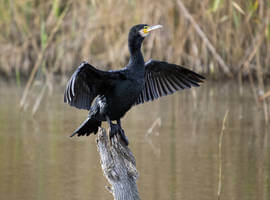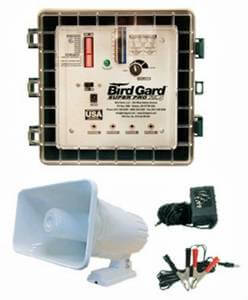This article addresses the serious issue posed by cormorants for fishermen and the available solutions to deter cormorants. It also provides valuable information about cormorants:
- Main species of cormorants inhabiting Spain
- What cormorants feed on
- Their breeding and nesting periods
- Issues caused by cormorants for fishermen
- Solutions for deterring cormorants
Cormorants in Spain
The main species of cormorant inhabiting Spain is the great cormorant (Phalacrocorax carbo), also known as the common cormorant or black cormorant. There are also other species of cormorants found on the peninsula, such as the shag.

In the past, the great cormorant only visited the peninsula during winter, migrating to Spain to escape the cold weather of Northern Europe. However, nowadays, the great cormorant is a resident species in Spain. Throughout the year, we can find large populations of cormorants settled in inland reservoirs of the peninsula.
Cormorant Feeding Habits
Cormorants primarily feed on fish, crustaceans, and amphibians. They nest on coastal cliffs or trees. They feed in rivers, reservoirs, freshwater lakes, the sea, or any other large bodies of water.
As we can see in this video, cormorants are skilled fishermen. They can dive to catch fish at great depths and can stay underwater for 30 seconds or more during fishing.
In areas where cormorants find easy food sources, such as fish farms or areas where fish restocking is done by fishing societies, cormorant populations can reach over a hundred individuals. Cormorants, like herons, can become a significant problem in aquaculture.
Cormorant Breeding Periods
Cormorants can reproduce at any time of the year, depending on feeding conditions.
During the breeding period, cormorants need to acquire large quantities of fish to feed their offspring. This makes it very challenging to deter them from ponds where they are guaranteed to find easy food throughout the year.
Cormorants, a Plague for Fishermen All Year Round
If no action is taken to prevent it, once cormorants have established themselves in an area for feeding, be it a pond, lake, river, fish farm, etc., and as long as the food source exists, these birds will remain there indefinitely. And the number of cormorants will increase over time.
The problem of cormorants for the fishing industry, fish farms, fishing societies, etc., is even greater than bird pests in agriculture. In agriculture, the problem is usually limited to around 2-3 months per year, coinciding with fruit ripening. However, cormorants are a problem all year round, as long as there is a food source.
Solutions to Deter Cormorants
Cormorants live in large groups and emit deep guttural sounds to communicate with other members of the colony.
The BirdGard Super Pro PA4 cormorant deterrent is specifically designed to emit low-frequency sounds that interfere with cormorant communication.
The BirdGard Super Pro PA4 cormorant deterrent is equipped with a specific sound card/chip against cormorants. This chip contains distress calls of these birds, which make the cormorant colony believe there is danger and they should move away from the area. It also includes other electronic sounds that scare cormorants, effectively deterring them without causing harm.
Once they are driven away from the area, it is necessary to keep the cormorant deterrent in operation to prevent new individuals from returning. In this case, it will be much easier to deter them with the distress calls emitted by the device, and these new cormorants will seek other areas to nest and feed.
BirdGard Super Pro PA4 Cormorant Deterrent
Here are some important details about the BirdGard Super Pro PA4 Cormorant Deterrent:
- Easy installation.
- Designed to operate outdoors under any weather conditions.
- Can be connected to an electrical power source or a 12-Volt battery.
- We can provide you with a solar panel to keep the battery charged at all times.
- You can connect 1 to 4 speakers to the device. Each speaker provides coverage of up to 6,000 square meters (0.6 hectares). In other words, a single deterrent with 4 connected speakers can cover an area of 2.4 hectares to deter cormorants.
- 30-day money-back guarantee if you are not satisfied with the results.
- For more information about the device and to view its technical specifications, you can visit our online store.
The following article provides additional information about recommended cormorant deterrents and other solutions that should not be used.
If you have any further inquiries about how to effectively and permanently deter cormorants, please feel free to contact us.

